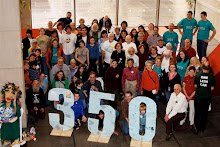The main cause of climate change is the amount of green house gasses in the atmosphere. After the advent of the industrial revolution human activity has emitted huge amounts of CO2 into the atmosphere.

(Figure shows how emissions increased as we entered the industrial revolution) (http://aie.org.au/AM/Images//lawdome.gif)
Global warming is a natural process and has been waxing and waning for millennia, however human activity is further catalyzing this change. CO2 or carbon dioxide is the primary cause for this warming because carbon dioxide is a green house gas, which means that it absorbs rays from the sun and readmits them as heat.
Carbon Dioxide is not the only greenhouse gas; there are many others such as water vapor, methane, and nitrous oxide. Carbon Dioxide is our main concern because humans emit so much of it, primarily because our entire way of life depends on the burning of fossil fuels which emits carbon dioxide.
Natural Drivers
Some other drivers of climate change are volcanoes, meteoritic impacts, and variations in solar radiation. Volcanoes have long been releasing carbon dioxide, other gases and solid particles into the atmosphere. By emitting solids particles into the atmosphere, volcanoes increase the amount of reflected solar radiation, thus causing global cooling events.
Meteoritic impacts also have the same effect as volcanoes because upon impact massive amount of solid particles are suspended into the atmosphere. This climatic event is thought to have caused the extinction of the dinosaurs.
Positive feedback loop
When ice melts over Antarctica, black rocks (basalt) are exposed and absorb more solar radiation than the reflective snow. As our climate warms, the ice melts quicker, which in turn causes the ice cap to melt faster. This positive feedback loop can also cause large amounts of sequestered amounts of methane. As this ice melts, methane is also released from the permafrost into the atmosphere. Methane is a more absorbent chemical than carbon dioxide, resulting in further warming. These positive feedback loops can make it difficult to understand the rate at which the Earth is heating.
Effect on ocean currents
The Gulf Stream and the mid Atlantic drift are the Earth’s solution to uneven heating. The Gulf Stream brings heat from the equator to the poles and cold water from the poles to the equator. There are actually palm trees in Iceland (which is on the Arctic Circle), because of this circulation.

(This figure shows the North Atlantic Circulation)
(http://zfacts.com/metaPage/lib/Atlantic_conveyor.jpg)
North Atlantic Circulation is driven from density differences in the surface water. Cold, salty water in the far North Atlantic sink, this sinking water drives this circulation. As the ice caps melt, the influx of fresh water decreases the salinity (amount of salt in water) of the far North Atlantic. Because the water has less salt in it, its density decreases making the water less likely to sink. This causes a slower movement in the North Atlantic Current. This North Atlantic Circulation, aka the Great Conveyer Belt, is what stabilizes Europe’s climate. If this circulation shut down, Europe would suffer from a massive cooling episode, which could have catastrophic implications on agriculture.
Jordan Clifford
